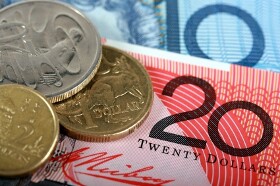As many other currencies, the Australian dollar was soft today due to risk aversion caused by escalating US trade wars. Poor China’s macroeconomic data was not helping to improve the traders’ mood either.
China’s official manufacturing Purchasing Managers’ Index fell from 50.1 in April to 49.4 in May, missing the average forecast of 49.9. The indicator was below the neutral 50.0 level, indicating contraction of the sector. The non-manufacturing PMI was at 54.3, remaining unchanged in the expansionary territory, in line with expectations.
As for Australia’s own macroeconomic data, the Reserve Bank of Australia reported that private sector credit rose 0.2% in April. That was below the 0.3% rate of growth registered in March and promised by economists to stay the same in April.
The Aussie also reacted negatively to the news that the United States are preparing to slap tariffs on all Mexican goods. While it does not affect Australia directly, trade wars are generally viewed as negative to the global economy, and that hurts riskier currencies, including the Australian dollar.
AUD/USD was little changed at 0.6913 as of 12:59 GMT today. EUR/AUD advanced from 1.6101 to 1.6136. AUD/JPY declined from 75.45 to 75.22.
If you have any questions, comments, or opinions regarding the Australian Dollar, feel free to post them using the commentary form below.
Aussie Soft due to Risk Aversion, Chinese Data
